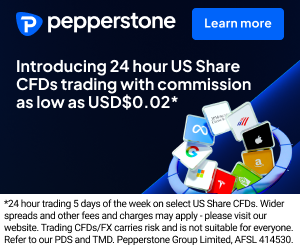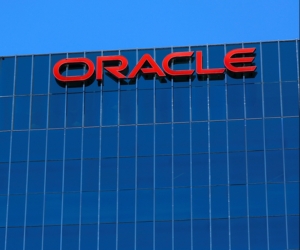WHAT HAPPENED TO ORACLE STOCK?
On September 10, 2025, Oracle took center stage in financial headlines after releasing mixed earnings paired with ultra-optimistic cloud and AI projections. The result? A historic 36% intraday stock surge. Company founder Larry Ellison briefly surpassed Elon Musk to become the world’s richest man—though only for a few hours. Yet the euphoria faded just as quickly: within 48 hours, the stock retraced nearly 10%. Now, analysts and investors are debating whether this move marks a speculative peak or the beginning of a new era for Oracle. This article breaks down the numbers, risk factors, and broader market context driving Oracle’s pivotal moment.

Why Oracle's stock is at the center of the debate
Oracle rocked financial markets on September 10, 2025, when its shares surged 36% in a single trading session. Why? A powerful mix of aggressive projections in artificial intelligence, rapid cloud growth, and a stunning 359% year-over-year jump in Remaining Performance Obligations (RPO). Although its Q2 earnings slightly missed expectations—$14.93 billion in revenue versus $15.03B forecasted, and EPS of $1.47 vs. $1.48—what really sent the stock flying was the future outlook.
During the earnings call, Larry Ellison made it clear: Oracle is betting big on becoming the backbone of global AI infrastructure, backed by long-term contracts totaling $455 billion. He also projected $18 billion in cloud revenue for FY2026 and a bold $144 billion target by 2030. Investor reaction was swift: the stock jumped from $241 to an intraday high of $338, closing at $328.
Revenue: $14.93B vs. $15.03B expected
Earnings per Share (EPS): $1.47 vs. $1.48 expected
RPO: 359% YoY growth, reaching $455B
Cloud guidance: $18B in FY2026; $144B by 2030
Stock move: +36% in one day; -10% in the following 48 hours
But not everyone is convinced. Some analysts warn that Oracle’s current P/E of 45.3 is steep, and the company must execute flawlessly to justify it. With $35 billion in projected cloud infrastructure spending for 2026 alone, margins could tighten, and execution risk looms large. Oracle now stands at a critical crossroads: is this the dawn of a new AI-powered era or a speculative peak fueled by hype?
The Ellison factor and concentration risk
Larry Ellison is more than Oracle’s co-founder—he’s the company’s strategist, public face, and majority shareholder. With 41% of the company under his control, Oracle’s recent stock surge briefly made him the world’s richest man, surpassing Elon Musk. His net worth skyrocketed from $292B to $393B in a single day, before retreating to ~$360B as the stock corrected by 10% over the next two sessions.
A fortune tied to a single stock
Ellison’s wealth is overwhelmingly tied to Oracle’s stock performance. While this aligns his incentives with shareholders, it also makes him uniquely vulnerable to sharp volatility. A $10 move in ORCL stock equals roughly $11.6 billion in personal net worth fluctuation for Ellison.
Owns 1.16 billion Oracle shares — 41% of the company
Net worth volatility: Swung from $393B to ~$360B in two trading days
Stargate project: $500B AI infrastructure initiative led with OpenAI and SoftBank
Total dependency: Oracle’s performance directly shapes Ellison’s wealth
Systemic exposure: If Oracle stumbles, the ripple effects could be massive
Beyond Oracle, Ellison’s influence spans politics (as a major Trump donor), real estate (owner of the Hawaiian island of Lanai), sports (owner of Indian Wells Masters), and even media (his son David Ellison is leading a potential Paramount acquisition). Oracle isn’t just a tech company—it’s the nucleus of a growing financial, geopolitical, and technological empire. And it all hinges on ORCL stock.
Outlook for Oracle stock and market sentiment
Following the September rally, Oracle’s market cap briefly topped $1.1 trillion, placing it firmly among the world’s tech giants. But the stock’s future remains highly debated. Bulls highlight Oracle’s aggressive AI/cloud roadmap and massive RPO contracts; bears warn of lofty valuations, rising capex, and execution risks. The next few quarters will be make-or-break.
Caught between vision and reality
Top analysts from Morgan Stanley, JPMorgan, and Goldman Sachs praise Oracle’s positioning in the AI cloud race. Still, many caution that global AI spending could cool after the explosive 2023–2025 wave, and that Oracle’s current valuation leaves little room for error. To meet its $144B 2030 cloud revenue target, execution must be nearly flawless.
Planned investment: $35B in cloud infrastructure for 2026
Current P/E ratio: 45.3 — well above industry average
Cloud competition: AWS, Azure, and Google Cloud won’t sit idle
Investor sentiment: Split between “next AI giant” and “overpriced legacy tech”
Macroeconomic conditions also add pressure. High interest rates, inflation fears, and geopolitical tensions continue to impact growth stocks. Although Oracle is well-capitalized and deeply entrenched in enterprise software, it is undergoing a strategic transformation—one that demands flawless execution in cloud and AI delivery. Whether this is the beginning of a new tech chapter or a market overreaction depends on what the next earnings reports reveal.
For now, ORCL is one of the Nasdaq’s boldest bets. If the company delivers, the upside is enormous. But if expectations fall short, the downside could be equally brutal. Either way, Oracle has officially re-entered the AI arms race—and Wall Street is watching every move.









